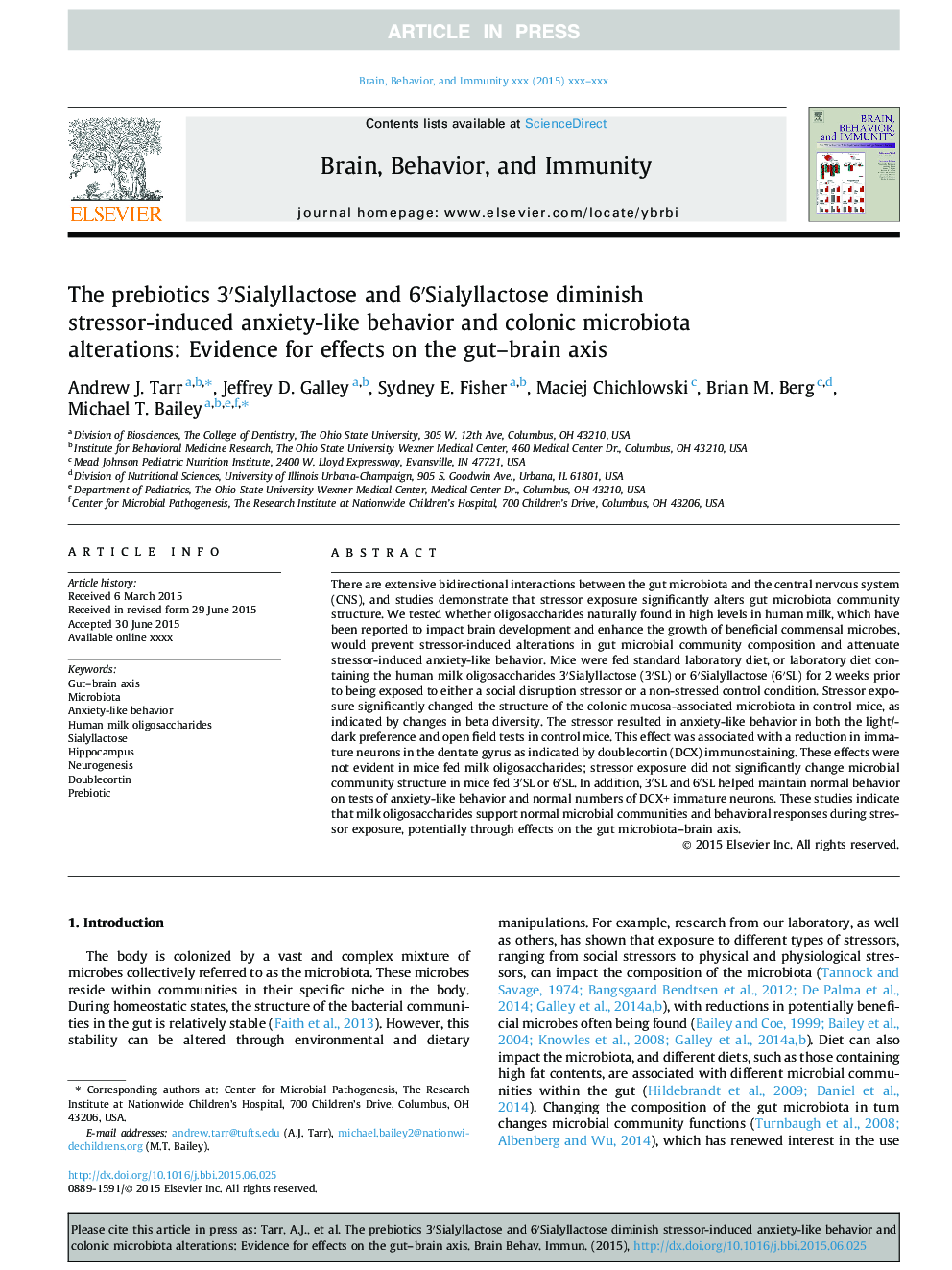| Article ID | Journal | Published Year | Pages | File Type |
|---|---|---|---|---|
| 7280664 | Brain, Behavior, and Immunity | 2015 | 12 Pages |
Abstract
There are extensive bidirectional interactions between the gut microbiota and the central nervous system (CNS), and studies demonstrate that stressor exposure significantly alters gut microbiota community structure. We tested whether oligosaccharides naturally found in high levels in human milk, which have been reported to impact brain development and enhance the growth of beneficial commensal microbes, would prevent stressor-induced alterations in gut microbial community composition and attenuate stressor-induced anxiety-like behavior. Mice were fed standard laboratory diet, or laboratory diet containing the human milk oligosaccharides 3â²Sialyllactose (3â²SL) or 6â²Sialyllactose (6â²SL) for 2Â weeks prior to being exposed to either a social disruption stressor or a non-stressed control condition. Stressor exposure significantly changed the structure of the colonic mucosa-associated microbiota in control mice, as indicated by changes in beta diversity. The stressor resulted in anxiety-like behavior in both the light/dark preference and open field tests in control mice. This effect was associated with a reduction in immature neurons in the dentate gyrus as indicated by doublecortin (DCX) immunostaining. These effects were not evident in mice fed milk oligosaccharides; stressor exposure did not significantly change microbial community structure in mice fed 3â²SL or 6â²SL. In addition, 3â²SL and 6â²SL helped maintain normal behavior on tests of anxiety-like behavior and normal numbers of DCX+ immature neurons. These studies indicate that milk oligosaccharides support normal microbial communities and behavioral responses during stressor exposure, potentially through effects on the gut microbiota-brain axis.
Keywords
Related Topics
Life Sciences
Immunology and Microbiology
Immunology
Authors
Andrew J. Tarr, Jeffrey D. Galley, Sydney E. Fisher, Maciej Chichlowski, Brian M. Berg, Michael T. Bailey,
